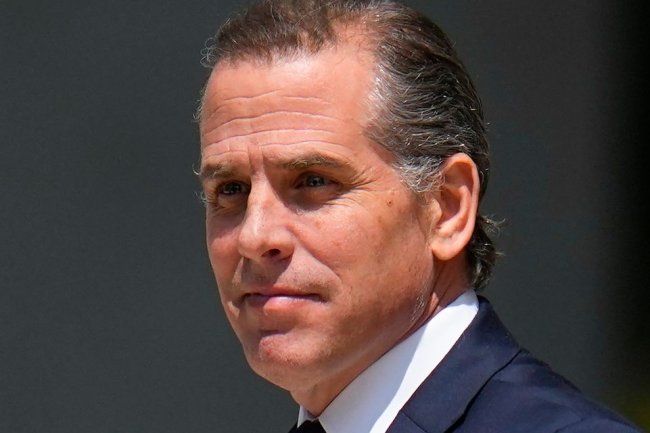Fast-Food Customers Are Giving Up on Dining In
McDonald’s, Burger King want big investments in eating areas, prompting pushback from franchisees McDonald’s customers on New York City’s Upper West Side could eat outside at the height of the pandemic. Photo: Noam Galai/Getty Images By Heather Haddon Aug. 7, 2023 5:30 am ET Americans are eating their burgers, fries and nuggets at home, in their cars and at the office—increasingly anywhere but at the fast-food restaurants themselves. At McDonald’s and Burger King, booths are often empty. Customers pick up their orders and head out. People sitting at tables sometimes are workers on their breaks. Dine-in custo


McDonald’s customers on New York City’s Upper West Side could eat outside at the height of the pandemic.
Photo: Noam Galai/Getty Images
Americans are eating their burgers, fries and nuggets at home, in their cars and at the office—increasingly anywhere but at the fast-food restaurants themselves.
At McDonald’s and Burger King, booths are often empty. Customers pick up their orders and head out. People sitting at tables sometimes are workers on their breaks.
Dine-in customers now represent less than 10% of visits in most U.S. McDonald’s restaurants, according to chain franchisees, compared with around a quarter of domestic sales before the Covid-19 pandemic.
Across U.S. fast-food chains, diners ate 14% of orders at a restaurant in the first five months of this year, less than 21% before the pandemic, data from market-research firm Circana show. In June, diners ate 14% of their fast-food orders in the restaurant’s dining room, compared with 22% in 2015, Circana said.
The Covid-19 pandemic accelerated a shift toward to-go that was already under way. Owners serving the bulk of their orders to-go found that they were more profitable and efficient to run, needing less maintenance work and staff. Big companies started speeding up investments in drive-throughs and online ordering.

Fewer fast-food customers want to dine in.
Photo: Michael Nagle/Xinhua/Getty Images
“You don’t necessarily need the big dining rooms that you needed in our traditional restaurants,” McDonald’s Chief Executive Chris Kempczinski said during an investor call in July.
McDonald’s and other chains are developing new restaurants centered around drive-throughs and carryout, with very little or no dine-in option.
During a recent lunch period at a McDonald’s in Oak Brook, Ill., a group of teens picked up cold McCafe drinks but didn’t stay, while office workers and others bought sacks to go. Over one 10-minute stretch, 10 cars placed orders via the restaurant’s two drive-through lanes, while two people went inside.
Still, fast-food restaurants are reluctant to give up on the dining room. Major chains want their restaurants to look modern, inviting and fresh.
McDonald’s, for instance, pledged to spend billions of dollars to help U.S. franchisees pay for digital kiosks, modern furnishings and other improvements beginning in 2017. The chain now expects U.S. owners to renovate dining rooms every 10 years. Franchisees said they often pay hundreds of thousands of dollars to install new furniture and fixtures and discard the old.

McDonald’s and other major chains are reluctant to give up on the dining room because they want an inviting, fresh look for their restaurants.
Photo: Rick Barbero/Associated Press

McDonald’s pledged to spend billions of dollars to help U.S. franchisees pay for digital kiosks and other improvements.
Photo: Joshua Lott/Bloomberg News
Dine-in orders at McDonald’s are a significant part of its U.S. business, and consumers’ perception of the brand have improved with the investments, the company said. McDonald’s said it is looking at its restaurant design to determine how to respond to consumer trends and work with franchisees to manage costs.
Burger King is spending millions of dollars to encourage U.S. owners to renovate their locations, though operators have to pick up much of the cost.
“It’s absolutely critical,” Josh Kobza, chief executive officer of Burger King-owner Restaurant Brands International, said in May. A Burger King spokeswoman said a remodel results in an average sales lift of 12% in the first year.
There are dining-room die-hards, of course. Janet Vitello,
an Oak Brook retiree, looked at the other customers at the area McDonald’s during a recent lunch and said: “They just go to the drive-through because it’s more convenient for them.”“But I like to sit down and eat my meal,” she said, after eating a hamburger, fries and a drink with her friend.
Restaurant franchisees, who run the majority of restaurants for chains like McDonald’s and Burger King, largely support the shift to dining away. It is often cheaper and less labor-intensive to pack food into bags to be eaten elsewhere than keep a dining room clean. Some franchisees say the fast-food business is permanently shifting toward drive-through, delivery and to-go orders.
Burger King revealed its first total rebrand in over 20 years as it looks to win back sales from rivals like McDonald’s and Wendy’s. A branding expert and reporter explain what Burger King is trying to say with its new logo. Photo illustration: Ryan Trefes
A number of U.S. McDonald’s operators in 2018 formed the National Owners Association, an independent group to help advocate for franchisees’ interests. The group has pushed back at the burger chain on some of the remodeling requirements.
U.S. franchisees are expected to freshen up their dining rooms, front counters and bathrooms with approved designs every 10 years, according to company documents. Equipment for the remodels averaged $350,000 last year, according to the documents. A full update can cost as high as $750,000, owners said.
SHARE YOUR THOUGHTS
When you order fast food, do you dine in or take it away? Join the conversation below.
McDonald’s management and franchisees have discussed the matter in recent months, and in May franchisees said they were hopeful to limit restaurant lobby renovations to a cost of around $300,000 per-decade for stores with a base of current designs, owners said in a message. The requirement to renovate dining rooms every decade would remain, they said.
At a McDonald’s location in Merrillville, Ind., recently, one worker steadily cleaned the dining room, and another employee asked the patrons sitting in the dining room if they needed anything. Graphic art hung from the walls, modern lights hung from the ceiling and the seats were a cool, new slate blue.
One customer, retiree James Lee from Merrillville, said the newly renovated dining room was nice—and took his coffee to go. “I’m a man of routine,” Lee said. “I like to drink my coffee and read the paper at home.”
Write to Heather Haddon at [email protected]
What's Your Reaction?

















